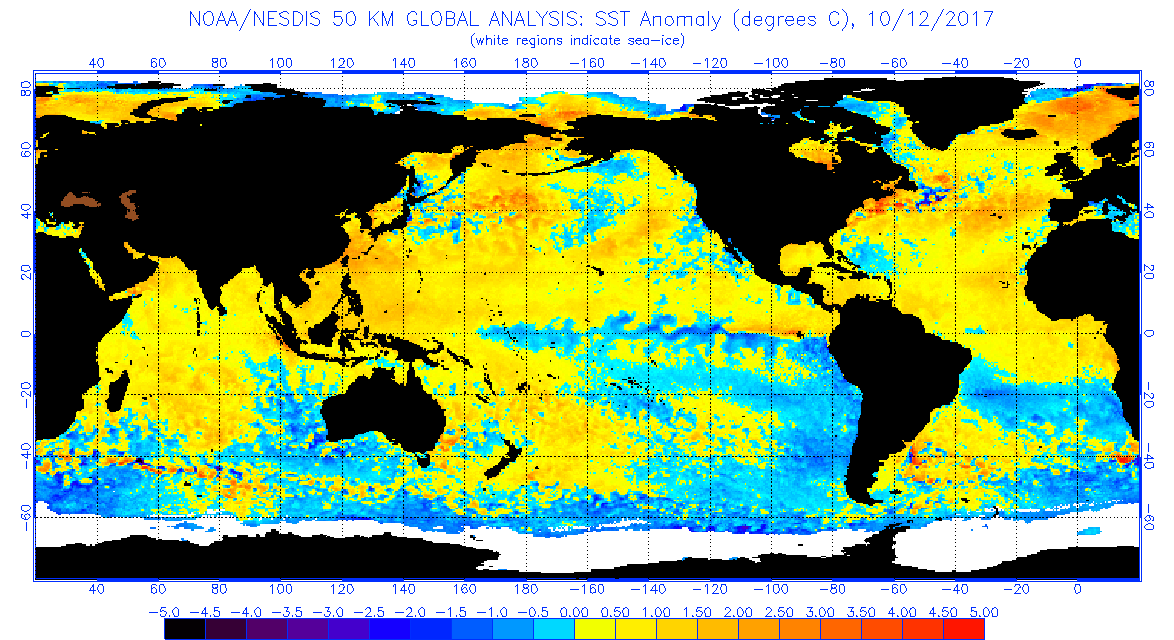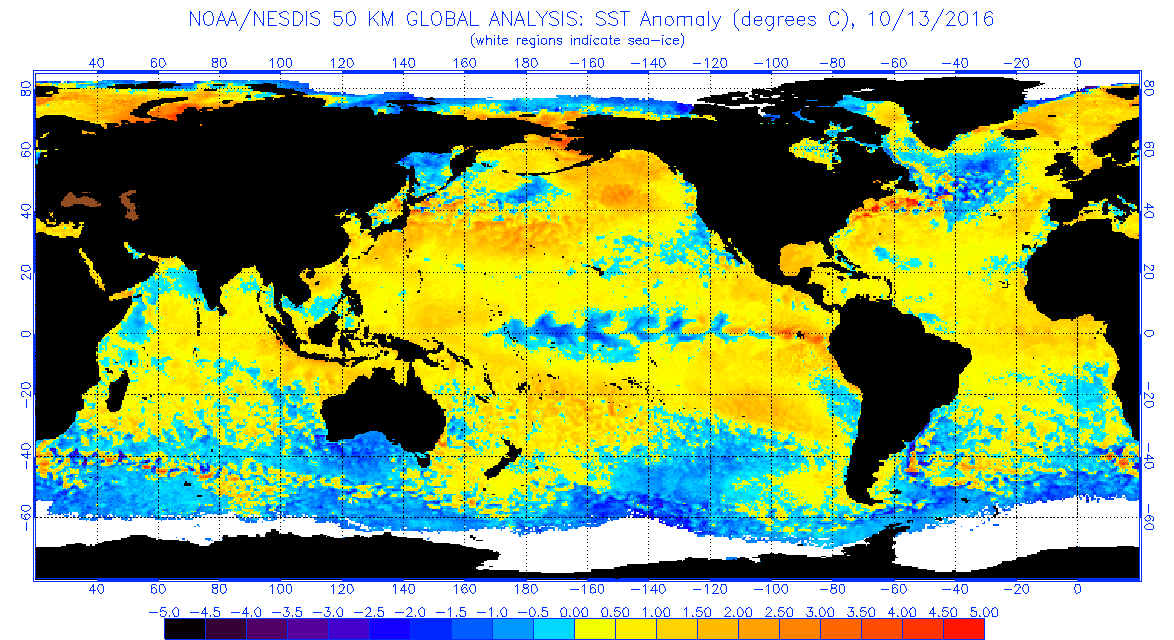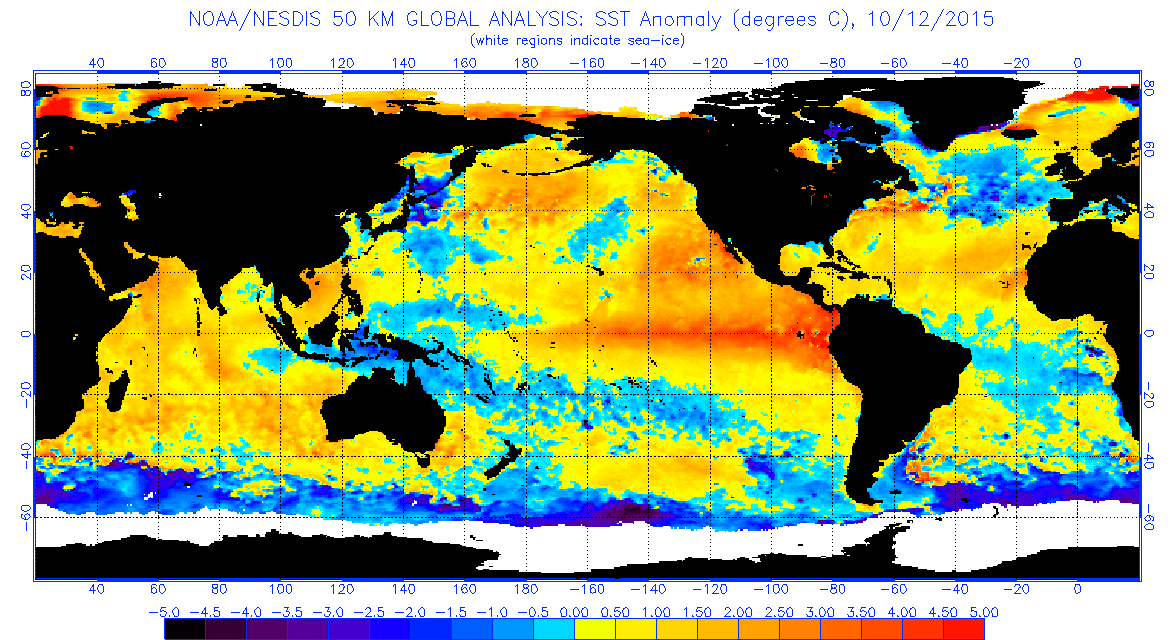When the MJO is 4-5 and outside the circle (moderate to high amp), you may as well assume it won't be cold most of those days and that it likely would be warmer than normal for that period as a whole. But when inside the circle during those phases, the longterm average has actually been fairly close to normal based on overall SE US MJO climo. Of course, the MJO normally rotates several times during winter.
Go here for a writeup about the correlation between MJO phase and KATL Jan temp.'s (as a proxy to SE winter overall):
http://blog.southernwx.com/2017/01/...phase-inside-the-left-side-of-circle-coldest/
Hopefully it will be a weak (ONI peak of say -0.6 to -0.8) rather than moderate La Nina (-0.9 or colder) as that would mean lower chance for a mild winter. Also, hopefully the MJO will be mainly weak, including inside the circle. If we can get a weak La Nina with MJO mainly inside or barely outside the circle for DJF, then the chance for a warm winter would be low.
Edit: I just remembered that you're in Arkansas whereas I'm talking more SE US. So, what I'm saying applies more to your E than in your state per se as my studies have been more SE US concentrated. I'm not so sure about Arkansas as I haven't studied its climo. Keep in mind that ATL is 450 miles away from you and my studies center around ATL.
I really do not understand the
physical mechanism (if there is one) linking weak MJO amplitude to lower probability of BN temperatures at least here in the SE US and thus Im skeptical of this claim and assume it's probably an artifact of the data unless more work is done, esp wrt cross-validation with other MJO indices. Several questions immediately come to mind that question the validity of your argument, namely:
A) Again, what's the
physical mechanism or phenomena that can bridge this link you're asserting exists between MJO amplitude and temperature anomalies in the SE US? If there is none, then you can't disprove what you're observing
may be merely an artifact of the data or is happening by random chance.
B) The inherent construction of the RMM MJO means it is far from a perfect measure of the phenomena and anything but, and often times Convectively Coupled Kelvin Waves, Equatorial Rossby Waves, TD Type Waves/Tropical Cyclones, Monsoon gyres, and even ENSO can create
spectral leakage, effectively meaning that these phenomena often are as falsely projected onto the RMM's leading principal components of OLR, U850, & U200 as an "MJO wave" when in reality, it's actually not an MJO wave, and the RMM index is very notorious for this because these quantities are unfiltered unlike the OMI and VPM... Henceforth, the question arises, how much of the time is the RMM index actually measuring a true MJO wave and how does this compare w/ other MJO indices, and what impact would this "bad" data have on your results (if any)?
C) What impact will the warming background climate have on the viability of your results, and how much is this actually contributing to your results? (i.e. for example, let's hypothetically say there's more MJO amplitude later in the record esp post mortem early-mid 1990s then this could skew the data w/ amplitude warmer because there are more strong MJO events later in the record and vis versa)
D) What are the sensitivity of your results to things like the QBO, ENSO, PDO, AMO, (etc), and utilization of MJO tracers such as OLR, U200, U850, & VP200 (among others)?
"If we can get a weak La Nina with MJO mainly inside or barely outside the circle for DJF, then the chance for a warm winter would be low."
Is it really safe to assume this here especially given a) warming background climate/persistence, b) bias towards +NAO last several years (& this was evident during the warmer climate of the medieval warm period), c) random variability/lurking variables (?), thus even if you were able to back this up with historical data, it still may not be a valid at all because there was no apparent dynamical adjustment for the aforementioned factors (among many others) which will inherently skew the data against the historical "grain" towards a warmer winter here in the SE US
Sorry for the interrogation here, but these are the kinds of questions and feedback I often observe on a day-to-day basis in academia and it's the ability to answer questions like these that allows one to make the leap of faith from research confined the blogosphere to academia and builds confidence in your peers...









